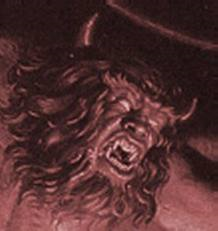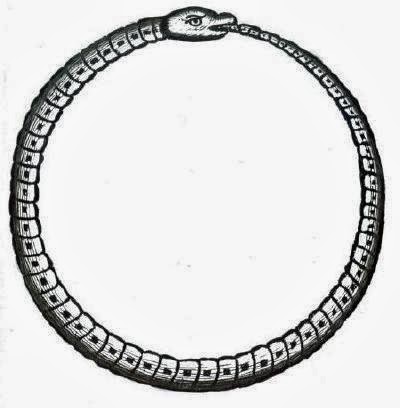In order to grasp the pagan world of our ancestors, especially the one connected with their religious life, we need to gather all the names of the god’s and goddesses of the Illyrian pantheon from the entire area of Illyricum from Albania across Bosnia and Herzegovina to Slovenia. Individual deities had several names but an identical function which is the reason why the Illyrians failed to establish a unique religion across the territory of Illyricum and why it was divided into many cults. But, according to all available data, worshiping the snake, the reincarnation of the Grand Mother, Thane and Vidasus were common to all Illyrian tribes mostly because these deities were connected with the cult of agriculture and fertility.
Dracon and Draccena: divine couple.
Nutrika: goddess, protector of children.
Sentona – goddess tied to the cult of agriculture.
Ika – goddess of fertility.
Histria – goddess, protector of the entire geographical area of Istria.
Boria – god of wind.
Nebra – goddess of storms and mist.
Trita – goddess of health. Her name has no connection to the Istria area, instead it can be recognized in the names from Bosnia and Herzegovina, in the form Tritan, Tritanon or Traitano. It is believed that the name of the goddess has an Illyrian-Celtic heritage.
Melosok – local Illyrian god, protector.
Anzotika, Irija or Prende: goddess of love.
Boa: divine snake.
Verbti: god of fire and the north wind which causes fires.
Beautiful celestials (in Albanian: Bukuri and Qiellit) in ancient Illyrian times, three gods which divided the world into the heavens, sea and underground.
Thana, Tana, Thiana or Zana (Albanian): Illyrian goddess equated to the Roman Diana. She is followed by three goats with golden horns. In Albanian mountains Zana lives as a faery adorned by bravery and beauty. Among the Bosniaks Zana or Tana is a forest faery (Zlatna) which lives in Bosnian forests and helps great warriors, such as Mujo Hrnjica. Deep connection of the goddess Tana is evident through folk songs where the scene of Mujo Hrnjica meeting with the faeries is described, the fairies were disguised as goats, with his shrewdness he manages to unmask them and subject them to his will. Even though in Bosnian mythology it is considered that the forest faery and Zlatna are actually two different faeries i.e. mother and daughter, we are probably talking about one faery which probably has a different name in various parts of Bosnia and Herzegovina. Identification of the Illyrian goddess in the name of the queen of faeries Zlatna (Zlatana) is more than evident in the name itself, namely, if we subtract first three letters from Zlatana we will get the name Tana or if we subtract the second, third and fourth letter – Zana.
Zlatna is called forest or mountain faery in north-western part of Bosnia with clear meaning of mountain i.e. forest faery or forest mother. Her epithet of queen, confirms her privileged position which she has as the goddess of our Illyrian forefathers.
Medauros or Armatos: god of war. Depicted as riding a horse, with a spear in his left hand.
Redon: protector of seafarers. God in the form of a boy next to which a dolphin appears.
En: one of the three supreme gods.
Perendi or Shurdi: god of thunder, husband of the goddess Prenda. A curious similarity appears between the “Slav” name of the god of thunder Perun and the Illyrian Perendi. If we take into consideration that the Illyrians, besides the Greeks, are the oldest people in the Balkans then it is easy to conclude that Perendi or Perin is nothing more than an ancient Illyrian deity which is wrongly connected with the forced Slav pantheon.
Vidasus or Vidas: one of the names of this grand god of the Illyrian pantheon is Messor or Žetalac which clearly alludes to his dominant role in the cult of fertility i.e. agriculture. Time of harvests was a period dedicated to him.
Dracon and Draccena: divine couple.
Nutrika: goddess, protector of children.
Sentona – goddess tied to the cult of agriculture.
Ika – goddess of fertility.
Histria – goddess, protector of the entire geographical area of Istria.
Boria – god of wind.
Nebra – goddess of storms and mist.
Trita – goddess of health. Her name has no connection to the Istria area, instead it can be recognized in the names from Bosnia and Herzegovina, in the form Tritan, Tritanon or Traitano. It is believed that the name of the goddess has an Illyrian-Celtic heritage.
Melosok – local Illyrian god, protector.
Anzotika, Irija or Prende: goddess of love.
Boa: divine snake.
Verbti: god of fire and the north wind which causes fires.
Beautiful celestials (in Albanian: Bukuri and Qiellit) in ancient Illyrian times, three gods which divided the world into the heavens, sea and underground.
Thana, Tana, Thiana or Zana (Albanian): Illyrian goddess equated to the Roman Diana. She is followed by three goats with golden horns. In Albanian mountains Zana lives as a faery adorned by bravery and beauty. Among the Bosniaks Zana or Tana is a forest faery (Zlatna) which lives in Bosnian forests and helps great warriors, such as Mujo Hrnjica. Deep connection of the goddess Tana is evident through folk songs where the scene of Mujo Hrnjica meeting with the faeries is described, the fairies were disguised as goats, with his shrewdness he manages to unmask them and subject them to his will. Even though in Bosnian mythology it is considered that the forest faery and Zlatna are actually two different faeries i.e. mother and daughter, we are probably talking about one faery which probably has a different name in various parts of Bosnia and Herzegovina. Identification of the Illyrian goddess in the name of the queen of faeries Zlatna (Zlatana) is more than evident in the name itself, namely, if we subtract first three letters from Zlatana we will get the name Tana or if we subtract the second, third and fourth letter – Zana.
Zlatna is called forest or mountain faery in north-western part of Bosnia with clear meaning of mountain i.e. forest faery or forest mother. Her epithet of queen, confirms her privileged position which she has as the goddess of our Illyrian forefathers.
Medauros or Armatos: god of war. Depicted as riding a horse, with a spear in his left hand.
Redon: protector of seafarers. God in the form of a boy next to which a dolphin appears.
En: one of the three supreme gods.
Perendi or Shurdi: god of thunder, husband of the goddess Prenda. A curious similarity appears between the “Slav” name of the god of thunder Perun and the Illyrian Perendi. If we take into consideration that the Illyrians, besides the Greeks, are the oldest people in the Balkans then it is easy to conclude that Perendi or Perin is nothing more than an ancient Illyrian deity which is wrongly connected with the forced Slav pantheon.
Vidasus or Vidas: one of the names of this grand god of the Illyrian pantheon is Messor or Žetalac which clearly alludes to his dominant role in the cult of fertility i.e. agriculture. Time of harvests was a period dedicated to him.




















